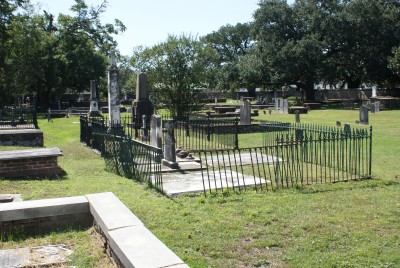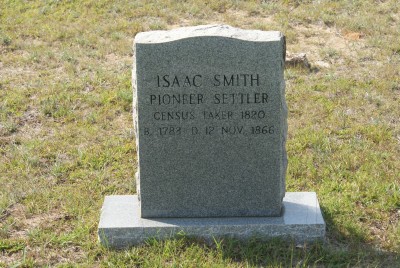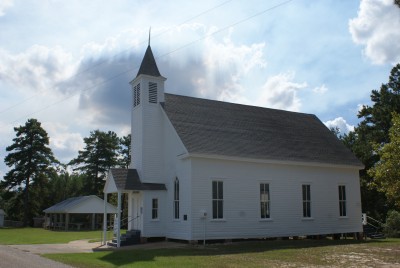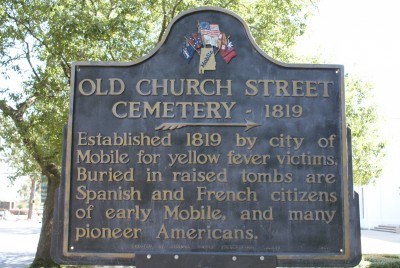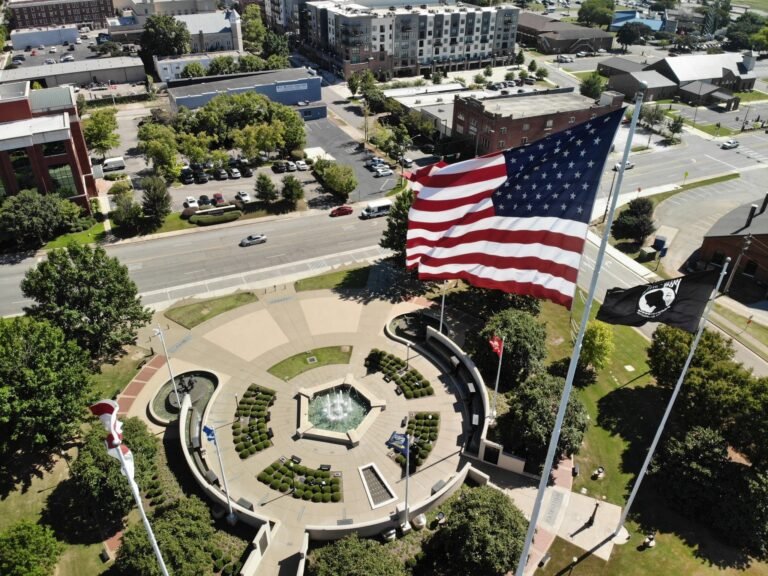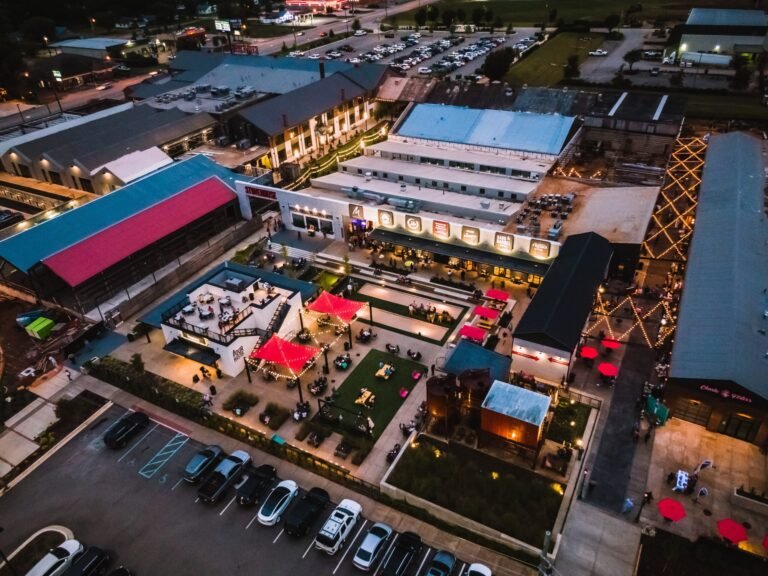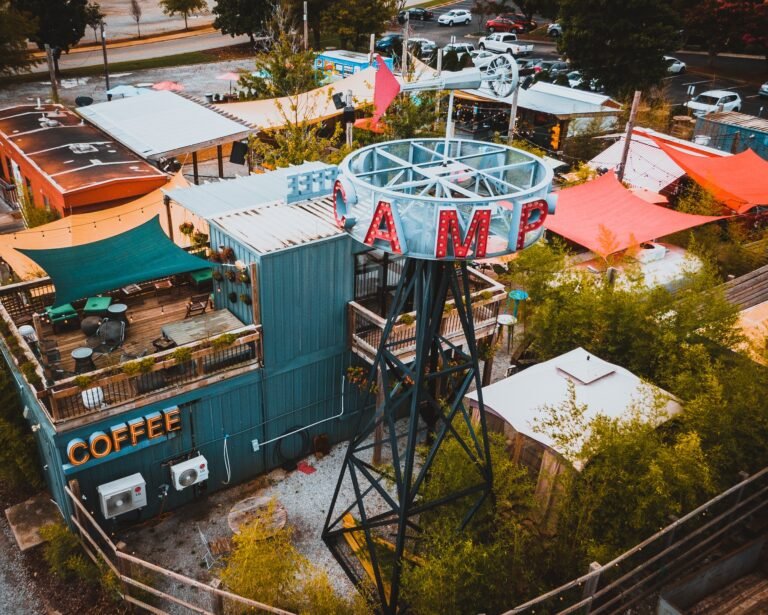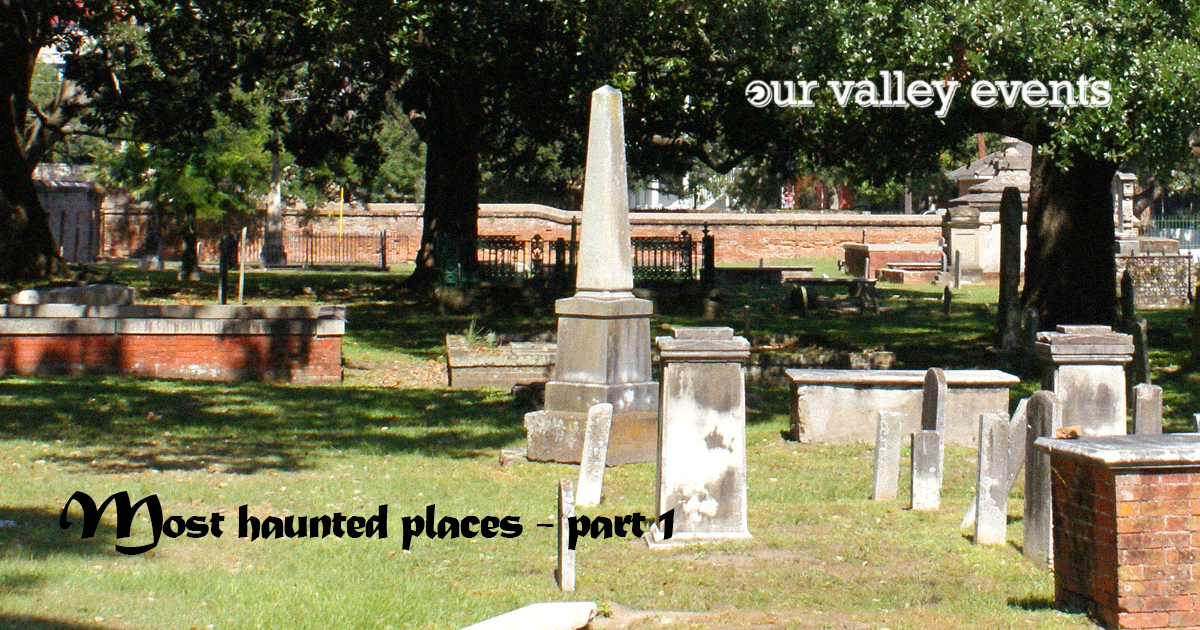 Given my long history of research into spiritual realms, my affiliation with several paranormal research groups, and various writings on the subject, it is no wonder that when October rolls around, I am often besieged with questions about ghosts.
Given my long history of research into spiritual realms, my affiliation with several paranormal research groups, and various writings on the subject, it is no wonder that when October rolls around, I am often besieged with questions about ghosts.
The most often-asked question is, of course, “Where is the most haunted place you have been?”
So, thanks to my hosts at Our Valley Events, I get to spend this month answering that question in a multi-part series that begins today.
I thought I would start with two purportedly haunted Alabama sites that may not be as well-known to those of us in the Tennessee Valley.
Legends surrounding these places have been passed down for years in their local communities.
The Church Street Graveyard and the Boyington Oak – Mobile
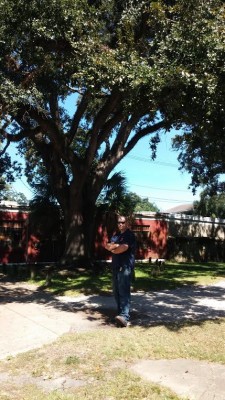
Situated on a dead-end street surrounded by a forbidding brick wall, the Church Street Graveyard seems mostly forgotten by the modern world. The four-acre enclave was dedicated in 1819 as the city’s main burial site, but was soon replaced. The old cemetery is the final resting place of more than 1,100 people, but the most famous is Joe Cain – the man who brought Mardi Gras back to Mobile after the Civil War. While the graveyard itself is reported to be the home of spectral apparitions and floating orbs, the most famous haunting occurs just outside the walls.
The tale begins in May 1834 when Nathanial Frost was found dead inside Church Street Graveyard from apparent stab wounds. Suspicion quickly fell upon Frost’s friend, Charles Boyington.
Boyington was arrested and brought to trial, where he proclaimed his innocence. Nevertheless, he was found guilty and hanged on February 20, 1835. With his last words, Boyington angrily told the witnesses that a mighty oak tree would grow from his grave as proof of his innocence.
A southern live oak did grow from the grave and stands today. Many people have reported seeing ghostly shapes around the tree, including a spectral dog that stands watch over the grave and disappears when approached. It is rumored that if you stand quietly beneath the tree, you can hear Boyington’s hoarse whisper, proclaiming his innocence still.
Oakey Streak Cemetery – Red Level
The small, white church and adjoining cemetery look much too peaceful to be referred to as the most haunted place in Alabama. Yet, many people give it that title.
Legends include sightings of ghost children playing in the cemetery and around the church, sounds of marching footsteps of dead soldiers, the glowing red eyes of a hell-hound, a spectral death car, or the wild wailings of a banshee. Some locals attribute the hauntings to nearby Consolation Church, which burned earlier this year.
Are these hauntings real? That is for you to decide, but if you decide to visit any of the locations, please be sure to do so with the utmost care as the authorities closely monitor these sites during the Halloween season. Also, most cemeteries are closed at dark.
However, Oakey Streak Cemetery has plenty of spooky history even without the legends. Dating to 1820, the cemetery is the site of unmarked graves of many early settlers and Confederate veterans, but most disturbingly, the graves of dozens of infants and children. Of the 320 marked graves in the cemetery, one third are those of children. There is even a marker indicating an area with 21 unknown infant graves.
And then there is a marker for the Cain triplets, which is inscribed: “In Memory of Infant Triplet Sons of H.F. and M.L. Cain, Born Dec. 11, 1889, Died June 13, 1890.” What caused the death of three 6-month-old boys all on Friday the 13th?
No one seems to know.
Wil Elrick hails from Guntersville, Alabama where at an early age he developed a love for both trivia and history. He has spent the last 20 odd years, fine tuning the art of communication while working in law enforcement, writing, television media, historical research, and public speaking. He lives in North Alabama with his two boys, and a neurotic German Shepherd Dog. He one day hopes that Bigfoot is proven real. Wil’s new book Alabama Scoundrels is available from History Press.

